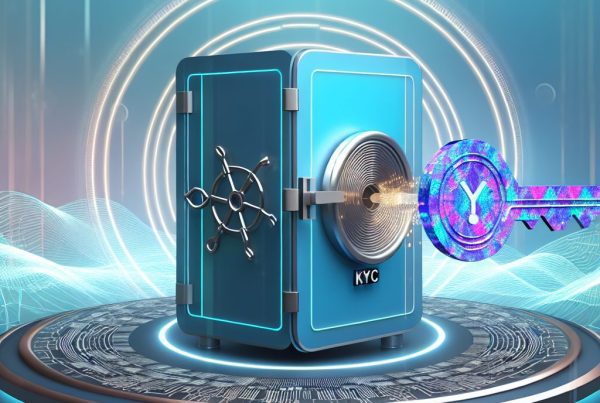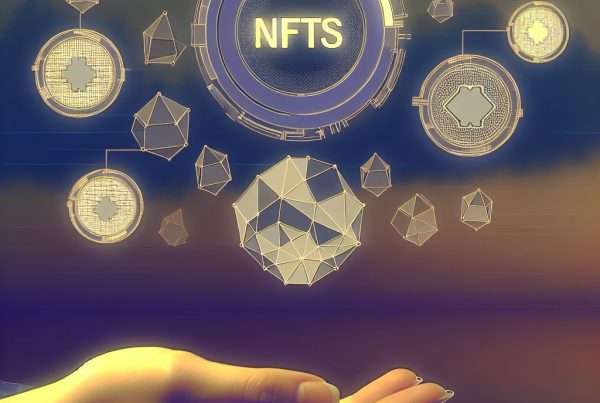Understanding Blockchain Nodes: The Backbone of Cryptocurrency Networks
In the world of cryptocurrency, the term blockchain nodes frequently surfaces, yet many individuals remain unclear about their significance and functionality. This article delves into the intricate workings of blockchain nodes, their types, roles, and the vital part they play in maintaining the integrity and security of cryptocurrency networks.
What is a Blockchain Node?
A blockchain node is essentially a computer that participates in a blockchain network. Each node maintains a copy of the entire blockchain and is responsible for validating and relaying transactions. Nodes communicate with one another to ensure that all copies of the blockchain are synchronized and up to date.
Nodes can be categorized into different types based on their roles and functionalities within the network. Understanding these distinctions is crucial for grasping how blockchain technology operates.
Types of Blockchain Nodes
There are primarily three types of blockchain nodes: full nodes, light nodes, and mining nodes. Each type serves a unique purpose within the network.
1. Full Nodes
Full nodes are the backbone of any blockchain network. They store the entire history of the blockchain and validate all transactions and blocks. By doing so, they ensure that the network remains secure and that all transactions are legitimate.
- Storage: Full nodes require significant storage space as they download and maintain the entire blockchain.
- Validation: They validate transactions and blocks, ensuring that they adhere to the network’s consensus rules.
- Decentralization: Full nodes contribute to the decentralization of the network, making it more resilient against attacks.
2. Light Nodes
Light nodes, also known as SPV (Simplified Payment Verification) nodes, do not store the entire blockchain. Instead, they download only the block headers, which contain essential information about the blocks. Light nodes rely on full nodes for transaction verification.

- Efficiency: Light nodes require less storage and bandwidth, making them ideal for mobile devices and applications.
- Transaction Verification: They can verify transactions by querying full nodes for specific information.
- Accessibility: Light nodes allow users to interact with the blockchain without needing extensive resources.
3. Mining Nodes
Mining nodes are specialized full nodes that participate in the process of creating new blocks through mining. They solve complex mathematical problems to validate transactions and add them to the blockchain.
- Block Creation: Mining nodes are responsible for creating new blocks and securing the network.
- Incentives: Miners are rewarded with cryptocurrency for their efforts, incentivizing them to maintain the network.
- Consensus Mechanism: They play a crucial role in the consensus mechanism, ensuring that all nodes agree on the state of the blockchain.
The Role of Nodes in Blockchain Networks
Blockchain nodes perform several critical functions that contribute to the overall health and security of the network. Understanding these roles can provide insight into why nodes are essential.
1. Transaction Validation
Nodes validate transactions by checking them against the network’s consensus rules. This process ensures that only legitimate transactions are added to the blockchain, preventing double-spending and fraud.
2. Data Storage and Distribution
Each node stores a copy of the blockchain, which is crucial for maintaining a decentralized network. This distribution of data ensures that no single entity has control over the entire blockchain, enhancing security and resilience.
3. Network Security
Nodes contribute to the security of the blockchain by participating in the consensus mechanism. The more nodes that validate transactions, the harder it becomes for malicious actors to manipulate the network.
4. Propagation of Information
Nodes communicate with one another to propagate transactions and blocks throughout the network. This communication ensures that all nodes have the most up-to-date information, maintaining synchronization across the blockchain.
Consensus Mechanisms and Their Relation to Nodes
Consensus mechanisms are protocols that nodes use to agree on the state of the blockchain. Different blockchains employ various consensus mechanisms, each with its own implications for how nodes operate.
1. Proof of Work (PoW)
In PoW systems, such as Bitcoin, mining nodes compete to solve complex mathematical problems. The first node to solve the problem gets to add a new block to the blockchain and is rewarded with cryptocurrency. This process requires significant computational power and energy.
2. Proof of Stake (PoS)
In PoS systems, nodes are chosen to validate transactions based on the number of coins they hold and are willing to “stake” as collateral. This method is more energy-efficient than PoW and allows for greater scalability.
3. Delegated Proof of Stake (DPoS)
DPoS is a variation of PoS where stakeholders elect a small number of delegates to validate transactions on their behalf. This system can enhance transaction speeds and scalability while maintaining decentralization.
Real-World Applications of Blockchain Nodes
Blockchain nodes are not just theoretical constructs; they have practical applications across various industries. Here are some notable use cases:
1. Financial Services
In the financial sector, blockchain nodes facilitate secure and transparent transactions. For instance, Ripple uses a network of nodes to enable real-time cross-border payments, reducing transaction times from days to seconds.
2. Supply Chain Management
Companies like IBM and Walmart utilize blockchain nodes to enhance supply chain transparency. By tracking products on a blockchain, stakeholders can verify the authenticity and origin of goods, reducing fraud and improving efficiency.
3. Healthcare
Blockchain nodes can securely store patient records, ensuring that only authorized personnel have access. This application enhances data security and patient privacy while facilitating seamless information sharing among healthcare providers.
Challenges and Limitations of Blockchain Nodes
While blockchain nodes play a crucial role in the cryptocurrency ecosystem, they also face several challenges:
1. Scalability
As the number of transactions increases, full nodes may struggle to keep up with the demand for storage and processing power. This challenge can lead to slower transaction times and increased fees.
2. Energy Consumption
Proof of Work systems, in particular, are criticized for their high energy consumption. The environmental impact of mining operations has led to calls for more sustainable alternatives.
3. Centralization Risks
In some cases, a small number of nodes may dominate the network, leading to centralization. This situation can undermine the security and integrity of the blockchain.
Future of Blockchain Nodes
The future of blockchain nodes is likely to be shaped by ongoing technological advancements and evolving industry needs. Here are some trends to watch:
1. Increased Adoption of PoS
As concerns about energy consumption grow, more projects are likely to adopt Proof of Stake and other energy-efficient consensus mechanisms. This shift could lead to a more sustainable blockchain ecosystem.
2. Enhanced Interoperability
Future blockchain networks may focus on interoperability, allowing different blockchains to communicate and share data seamlessly. This development could enhance the functionality of nodes across various platforms.
3. Improved Scalability Solutions
Innovations such as sharding and layer-2 solutions aim to address scalability issues, enabling nodes to process transactions more efficiently without compromising security.
Frequently Asked Questions (FAQs)
What is the primary function of a blockchain node?
The primary function of a blockchain node is to validate transactions and maintain a copy of the blockchain, ensuring that all nodes in the network are synchronized and secure.
How do full nodes differ from light nodes?
Full nodes store the entire blockchain and validate all transactions, while light nodes only download block headers and rely on full nodes for transaction verification.
Can anyone run a blockchain node?
Yes, anyone can run a blockchain node, but the requirements vary depending on the type of node and the specific blockchain network.
What are the benefits of running a full node?
Running a full node contributes to network security, allows for independent transaction verification, and helps maintain decentralization.
Are there any risks associated with running a node?
Running a node can expose your computer to potential security risks, and it may require significant resources in terms of storage and bandwidth.
Conclusion
Blockchain nodes are fundamental components of cryptocurrency networks, playing critical roles in transaction validation, data storage, and network security. Understanding the different types of nodes and their functions can provide valuable insights into how blockchain technology operates. As the industry continues to evolve, the importance of nodes will only grow, shaping the future of decentralized finance and beyond.
For the latest updates on cryptocurrency news and price tracking, visit Bitrabo. Stay connected with me on social media: X, Instagram, and Threads.
Disclaimer: This article is for informational purposes only and should not be considered financial advice. Always conduct your own research before making investment decisions.
The Crypto Watchlist of the Week 🔎
Subscribe to receive expert-curated projects with real potential—plus trends, risks, and insights that matter. Get handpicked crypto projects, deep analysis & market updates delivered to you.


